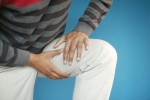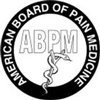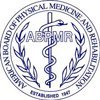Home »
Blog » Sports Medicine
| Stem Cell, PRP, Acupuncture in Queens & Long Island, New York
Sports Medicine | Stem Cell, PRP, Acupuncture in Queens & Long Island, New York
Like most forms of exercise, weight lifting has many potential benefits for spinal health, but also has the potential to create or worsen back injuries. Extending or flexing the back muscles against resistance (the weight) during weightlifting and bodybuilding may result in several injuries, including muscle strain and ligament injury, Certain types of weightlifting exercises can be particularly stressful to the joints and soft tissues, such as Clean-and-jerk, Dead-lift, Snatch, Squats.
Read more
Biking is a popular form of aerobic exercise and is often a favored form of exercise by people with low back pain conditions. Biking may be a good exercise option for many reasons: Biking is less jarring to the spine than many other forms of aerobic exercise, such as jogging or aerobics class. Stationary bicycling is particularly gentle on the spine, and the variety of spinning classes now available can provide a vigorous aerobic workout with minimal stress to the lower back.
Read more
Exercise is an important part of a healthy lifestyle, and sports are one approach many people choose to use to get their exercise. For people with back pain, sports can still be a viable option if they pay attention to their back. Knowing the type of strain various sports place on the back may help prevent a back injury for others who participate in sports.
Read more
For the millions of people who have long-standing low back pain, golf can still be an enjoyable sport. Using the right equipment, alongside a routine of stretching and low-impact exercise, will go a long way in helping maintain one’s ability to play golf.
Read more
Treatment options are mainly guided by the type and severity of the injury that is sustained in the lower back. Three common types of injury from golf that need treatment include:
- Muscle strains. Rough, forceful golf swings or sudden shifts during the downswing can lead to strained muscles.
- Muscle and tendon attachment. Excessive muscle use, accidents, or swing irregularities tend to cause this type of injury.
Read more
It is important to note that overuse or overexertion is a major contributing factor to golf-related injuries, accounting for over 80% of reported golf injuries. Gradually increasing the amount of time spent on the golf course will allow the muscles to slowly adapt to the demands of the sport. A little effort and caution go a long way to prevent back pain.
Read more
Golf is a favorite sport and pastime among many. However, the torque and force applied across the lower back pain creates a significant risk for developing or worsening lower back pain. People who suffer from chronic or recurrent episodes of low back pain can be frustrated because the pain hinders their ability to play golf.
Read more
Golfing involves a lot of strenuous motion that can put serious stress on the lower back. Exercise physiologists offer advice and stretches to help you avoid it. The benefits of golf are social engagement, getting fresh air, and movement if you skip the cart, you may walk between six and eight miles. Plus, the challenge of it is a pleasure.
Read more
It has been reported that groin injuries account for 5% to 9% of all injuries among high school athletes. However, a systematic review suggests that, historically, “groin” injuries have been defined poorly. As recently as five years ago, children or adolescents complaining of groin pain were advised to stretch, ice, and take a rest from the activity which aggravated the discomfort.
Read more
Little League and adolescent throwers are as susceptible to many of the same stresses on their arms as adult players. Often, injuries that develop at a young age may become more serious as the player becomes older. However, certain precautions can be taken to prevent or minimize injuries.
Read more
Love this Post? Spread the World
























